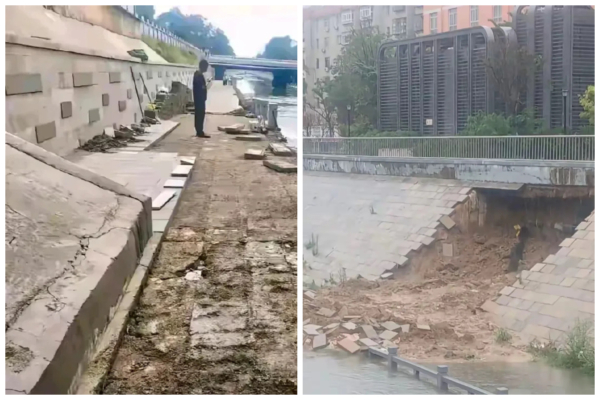Amidst the collapse of the real estate market on the Chinese mainland, an increasing number of shoddy construction projects are coming to light. Analysts believe that with the economic downturn, both local governments and developers are running out of money, leading to a vicious cycle of cutting corners.
According to reports from The Paper, on June 30th, Mr. Chen, an owner of a property in Zhuzhou, Hunan Province, complained that his newly delivered property had subpar construction quality. He discovered that the floor of his unit easily punctured with PVC pipes and wooden sticks, revealing poor workmanship. Mr. Chen expressed frustration as he and his family had purchased the property for the sake of their child’s education despite the substandard quality. The developer responded by stating that it was just a minor flaw in appearance due to the need for pre-construction cable holes, which did not compromise safety.
However, netizens raised doubts, questioning the excuses given by the developer and expressing concerns over the safety hazards posed by such shoddy construction practices. Professional opinions indicate that while the cable holes might be legitimate, the later inadequate filling with poor-quality materials reflects a blatant disregard for proper construction standards.
The issue of hollow columns appearing in buildings in Jixinhe, Pingtan County, Fujian Province, further highlights the alarming trend of subpar construction projects in China. Real estate properties are being delivered with various defects, ranging from water leakages, rusted iron railings, to makeshift structures disguised as premium features.
Criticism from both experts and the public has intensified as reports emerge of compromised structural integrity, faulty foundations, and even collapsing buildings in several areas across the region. These incidents have raised concerns about the rampant practice of cutting corners in construction projects, jeopardizing the safety and well-being of residents.
Furthermore, the recent incidents of land subsidence in Yuzhong County, Lanzhou, and platform settlement at Hangzhou East Station have sparked fears regarding the structural soundness and stability of infrastructure projects in China. The alarming incidents highlight the importance of adhering to stringent construction standards and maintaining the integrity of building foundations to prevent potential disasters.
Mr. Yu, a Chinese-American structural engineer, emphasized the significance of quality control measures in construction, stressing the need for proper materials, reinforcement, and adherence to design specifications to ensure the structural stability of buildings. He pointed out that compromised construction practices could lead to structural failures and endanger the lives of residents.
As reports of shoddy construction practices and infrastructure failures continue to surface, experts warn of the dire consequences of prioritizing profit over quality in the construction industry. The prevalence of substandard construction projects underscores the urgent need for stringent regulations and oversight to safeguard the integrity and safety of buildings in China.
In conclusion, the prevalence of shoddy construction practices and infrastructure failures in China reflects systemic issues within the construction industry, fueled by a combination of economic pressures, corruption, and lax regulatory enforcement. As stakeholders grapple with the fallout from these incidents, it is imperative to prioritize safety, quality, and accountability to prevent further disasters and uphold the integrity of the built environment.

